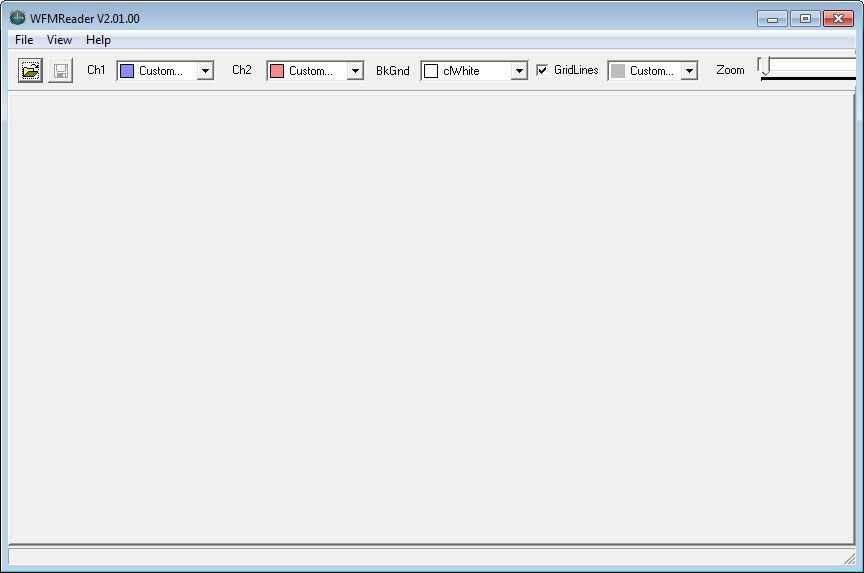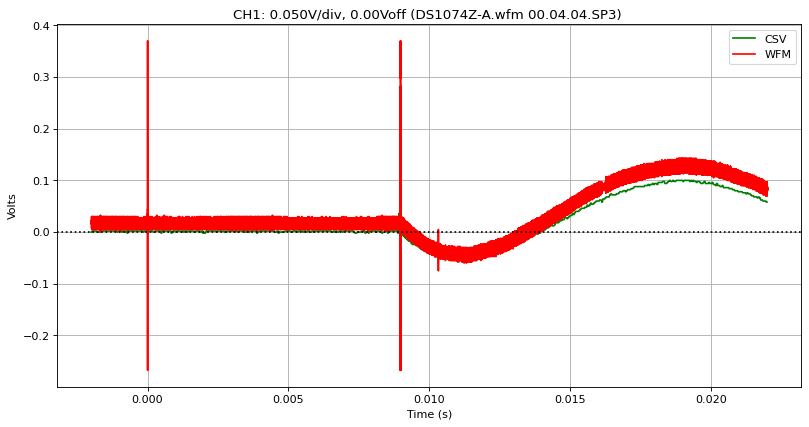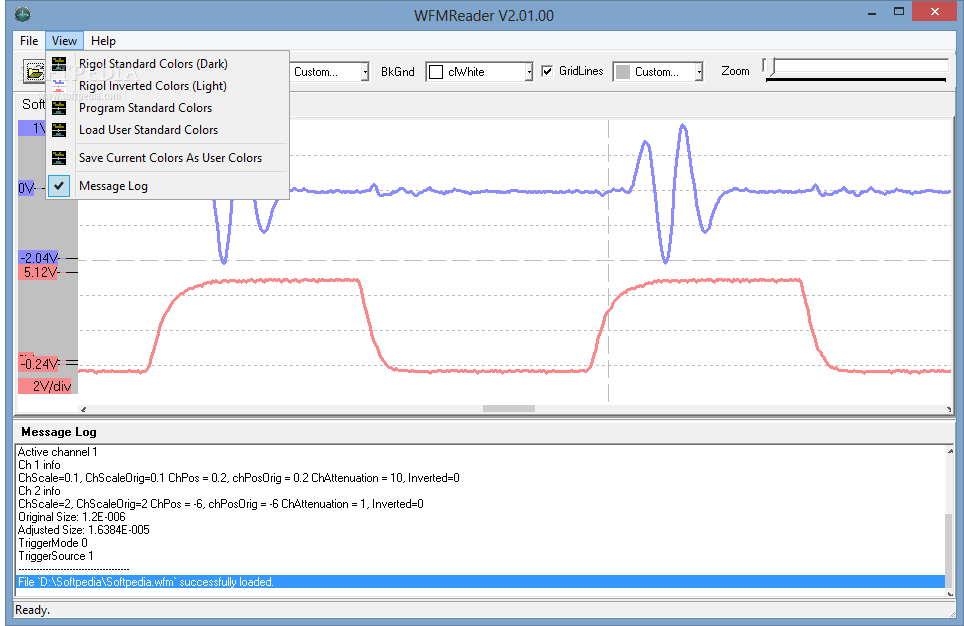

There are several derivations of this code – all suffering more or less from the same problems. But this script suffers from not parsing all the available information and doing errors in alternate trigger mode. There already exist several attempts in generating a parser for the file format. I was very eager to get back from my travels to check out my new scope. Unfortunately, I soon discovered that there is no good program to parse the native wfm files generated by the scope. Introduction So, just a day before my vacation trip I got a brand new RIGOL DS1052E.

As a bonus, it comes with the ability to export the data into more common formats with a single click. A useful tool for handling WFM files with ease On the whole, this software solution seems to be quite well equipped to help users load and view Rigol oscilloscope waveforms. Should you need to export the content of one such file to a more common format, WFMReader is able to cater to your needs by providing CSV and image output options. There is also a message log area that can be activated from the 'View' menu, so the graphical data is doubled by textual output to further help in the WFM analysis. Rigol oscilloscope waveform files (tested with Rigol DS1052E). Waveform audio files (PCM formats) *.wfm. It allows to export waveform and spectrum charts as BMP, PNG or SVG images. WFM Viewer is a utility for detailed inspection of signal files in both time and frequency domains. Thus, you can opt for the Rigol standard or inverted colors, use the program standard scheme or create a custom one on the spot and save it for later use. View and export the information stored in Rigol waveforms WFMReader offers its users a small set of color schemes that can be used to have the channel data presented in a readable form. The main window comes with a simple, yet efficient design, which makes it possible for anyone to open and take a close look at the data contained inside a WFM file. Clear layout for analyzing the content of WFM files One of the most important advantages of this tool is the ability to run on any system without requiring installation, so all you will have to do is simply unpack the archive and deploy the executable. WFMReader is one such program and its purpose is to facilitate the viewing of a certain type of waveforms, more precisely those generated by Rigol oscilloscopes. Fortunately, for most such formats there are some equally specialized utilities that are meant to aid users in working with those files.

Handling filetypes that are specific to a very limited number of applications can be a very difficult task, especially when it comes to viewing and editing them.


 0 kommentar(er)
0 kommentar(er)
